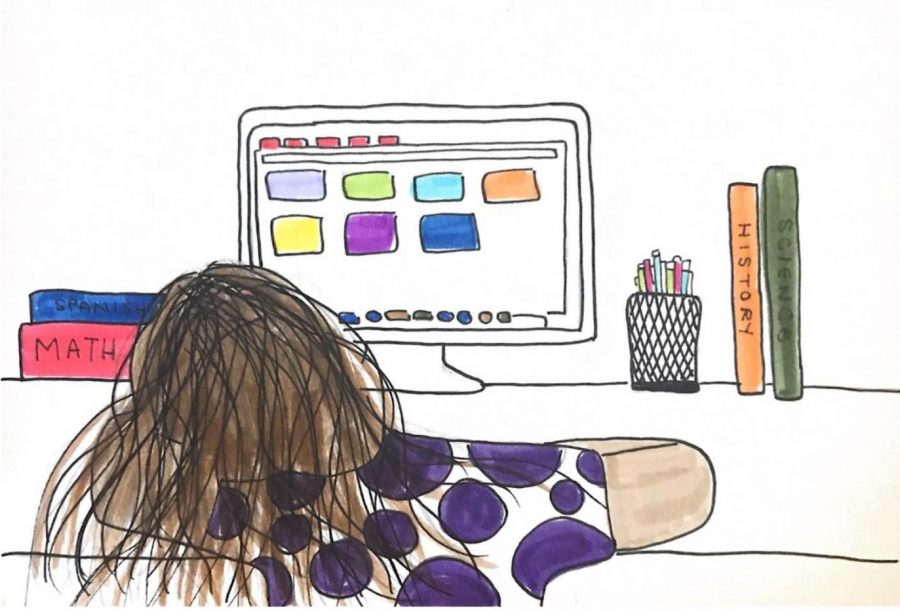Online Learning Connects Classrooms
Students have continued to learn through programs and websites like Google Classroom, Zoom, and more. Even though learning does not take place in a physical classroom, teachers still find ways to connect with their students.
April 17, 2020
Due to the COVID-19 outbreak, schools all around the country are moving to some sort of online education because of school closures. Whether it’s Google Classroom, Zoom, or Google Hangouts, teachers and students are able to remain connected even while the schools are shut down.
Now that the classroom has transferred to an online format, many advantages to this new form of education have presented themselves.
Teachers who already used Google Classroom before the closure were able to have a more seamless transition to online schooling. Classroom allows teachers to post assignments, videos and links for their students to view while also including due dates for students to upload and turn in the work that they accomplish. For the students, Google Classroom makes it easy for students to see what work they have assigned and due.
In addition to the online software of Google Classroom, other sources such as Zoom and Google Hangout are also helpful in keeping students and teachers engaged and connected.
Zoom and Google Hangout allow teachers and students to video chat with one another. Video chats are very helpful for subjects that require more lecture-based learning. Most of the AP classes are lecture-based, so video chats are very useful for teachers giving lessons to students.
Online learning is also paired with some negative side effects. It is now very easy to cheat on tests or quizzes because the internet is available to the students to research and obtain answers. To combat this problem, some tests, like the AP tests, have changed their format to “open book” and “open note” to make the tests fair.
Online school has overall been successful these first two weeks mainly because of both the students’ and teachers’ willingness to cooperate with one another. It is important to have flexibility and understanding because online learning is novel to everyone.
Most teachers have established office hours for students to video chat with them to answer possible questions and have also extended some due dates to allow students to adjust to online school before assigning a heavier workload.
Students have also taken advantage of Zoom and Google Hangout to stay connected with one another while stuck at home all day.
The district has been very helpful in providing students with the proper resources to access online learning. There have been Chromebook distributions at local schools to provide students with technology and a team to provide tech support to families that need extra help.
Online school has allowed students to explore other hobbies and activities because of additional free time added to the day. Students are taking up a new instrument, or starting an art project to entertain themselves while stuck in the house all day.
Quarantine has isolated students in their homes and having online school has been an activity to keep students from complete boredom.
Some students have more work than others from their teachers, so it is important to space out work throughout the week so that everything does not get completed last minute. Now that school has transferred online, it is more important to put in more effort into assignments because if there is only one assignment due a week, it needs to be the best it can be.
Students and teachers are all adjusting to the new normal of online school. Although it is very different from in-class learning, there are positives to this new system. With Zoom meetings and Google Classroom, classes are more connected and are able to stay engaged even while being stuck at home.
Thanks to the district’s resources, all students are able to reach online learning and are able to remain engaged in school even while schools are closed.



